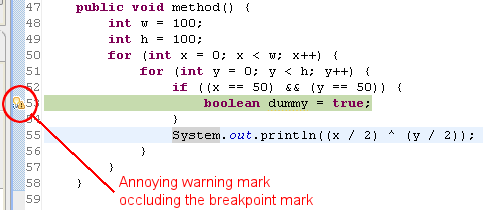I don't know if this was "the" official use case, but the following produces a warning in Java (that can further produce compile errors if mixed with return statements, leading to unreachable code):
while (1 == 2) { // Note that "if" is treated differently
System.out.println("Unreachable code");
}
However this is legal:
while (isUserAGoat()) {
System.out.println("Unreachable but determined at runtime, not at compile time");
}
So I often find myself writing a silly utility method for the quickest way to dummy out a code block, then in completing debugging find all calls to it, so provided the implementation doesn't change this can be used for that.
JLS points out if (false) does not trigger "unreachable code" for the specific reason that this would break support for debug flags, i.e., basically this use case (h/t @auselen). (static final boolean DEBUG = false; for instance).
I replaced while for if, producing a more obscure use case. I believe you can trip up your IDE, like Eclipse, with this behavior, but this edit is 4 years into the future, and I don't have an Eclipse environment to play with.


